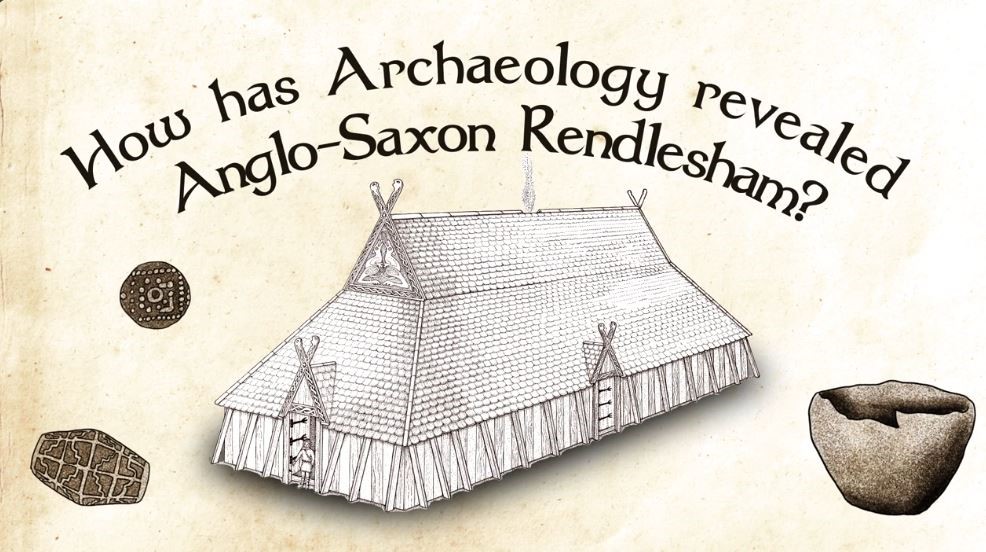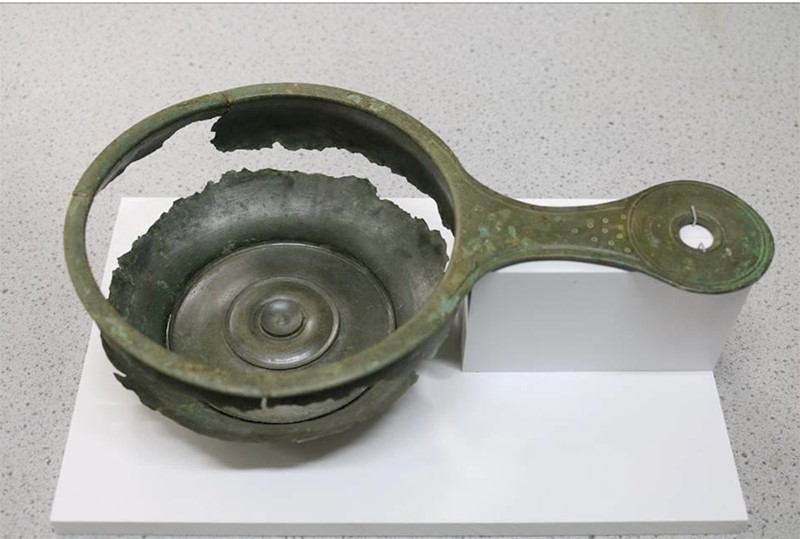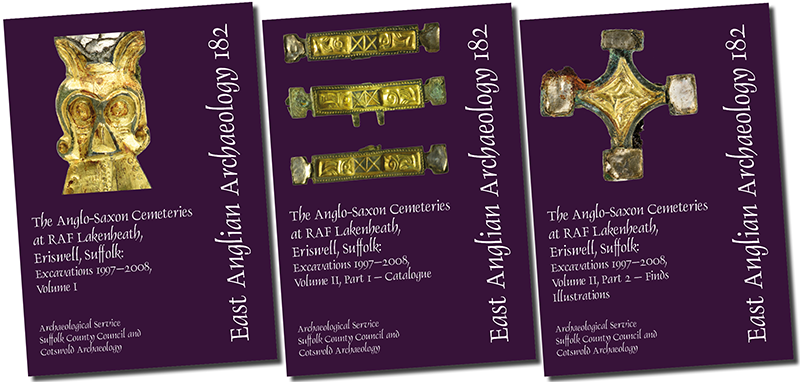
Archaeology News in Suffolk
A collection of archaeological news, projects and events in Suffolk from Suffolk County Council Archaeological Service
Welcome to our e-newsletter for August 2024
Upcoming Events
Ask the Expert at Christchurch Mansion, Ipswich
📅 When: Thursday 31st October
🕚 Time: Drop in anytime between 10am-3pm
📍 Where: Christchurch Mansion, Ipswich
💰 Price: FREE admission, no booking required!
The Suffolk Finds Recording team will bring a variety of archaeological objects and answer your questions about archaeology in Suffolk. Have you recently found any archaeological objects? Bring them along and the team can help to identify them.
Featured Projects - Rendlesham Revealed


Image: (© Suffolk County Council)
Archaeology and Anglo-Saxon Teaching Resources
The project team have created new teaching resources for schools and home-schooling, based on archaeology and Anglo-Saxons, for ages 7-11years (KS2) although they can be easily adapted to suit different ages. There are two ready-to-go and easily editable PowerPoints that are freely available to download from our website. They give an introduction to archaeology, focusing on the techniques used by archaeologists to investigate the Anglo-Saxon royal settlement at Rendlesham, which was once a residence of the early East Anglian Kings. They also explore artefacts, material types and what survives.

Image: Volunteer and Cotswold Archaeology excavating the burial at Rendlesham. (© Suffolk County Council)
Rendlesham Behind the Scenes: Post-Excavation Update
You may remember that back in October 2023 the excavations at Rendlesham uncovered unexpected graves in the smaller trench (Trench 15). Since then, the specialist Sue Anderson, has examined the human remains and radiocarbon dates have been returned identifying them to between the late 7th and late 8th centuries. Read the blog article to learn more.
Featured Projects - Brecks Fen Edge and Rivers

Image: Volunteers fieldwalking at Euston
Fieldwalking at Euston
In April, 60 local volunteers took part in three days of fieldwalking and surface finds collection at Euston, as part of the Brecks Fen Edge and Rivers project. This survey was the first time any formal archaeological investigation had taken place on this particular field. Two areas were targeted in this field, one at the top of the slope and the other close to the river, in the area where previous metal detecting found a Roman coin scatter. Together, the volunteers found a variety of material from the prehistoric, Roman, medieval and post-medieval periods. Most strikingly was the recovery of a locally significant assemblage of Neolithic and Bronze Age flint artefacts.
Finds Recording in Suffolk

Image: Roman pan after micro-excavation and conservation by Norfolk Museums Services Conservators.
Roman Pan excavated near Bury St Edmunds
Earlier this year, a local metal detector user discovered this almost complete early Roman copper-alloy pan. Suffolk County Council Archaeological Service block lifted the pan, and Norfolk Museum Service Conservators micro-excavated it from the soil block in the lab, thanks to funding by the Brecks Fen Edge and Rivers project.The pan is a significant discovery. They were made in Campania, Southern Italy and also in Gaul and are widely distributed across Europe and may have been used for heating wine. The landowner and finder have kindly donated the pan to West Stow Anglo-Saxon Village and Museum and it is now on permanent display to the public.
If you have recently found an archaeological object in Suffolk which you'd like identified and recorded, our Finds Recording Team can help. Find out more about Finds Recording here.
From the Vaults

Image: Book covers for “The Anglo-Saxon Cemeteries at RAF Lakenheath” (© Suffolk County Council)
Lakenheath’s Anglo-Saxon past uncovered in new book
Details of 1,500 year old burial grounds at RAF Lakenheath, including that of the famous Lakenheath Warrior, are included in a new book which is out now. “The Anglo-Saxon Cemeteries at RAF Lakenheath, Eriswell, Suffolk: Excavations 1997-2008” explores excavations of many human remains resulting in the discovery of four separate, but linked, burial grounds of the 5th to 8th centuries AD. The publication is written by Jo Caruth and John Hines, with expert contributions from a number of other specialists. It is produced across two volumes, published by Suffolk County Council Archaeological Service (SCCAS) and Cotswold Archaeology, and funded by the Ministry of Defence.
Thank you for joining our e-newsletter, for those who are new, here's a brief summary of what we do.
We are the main provider of archaeological advice in Suffolk and to promote the conservation, enhancement and understanding of Suffolk's distinctive historic environment, we:
- maintain a record of archaeology and heritage assets, the Historic Environment Record
- provide advice to planners, developers and farmers
- identify and record finds made by members of the public
- curate an archive for fieldwork projects carried out in the county
- publish the results of fieldwork and other research into Suffolk's past